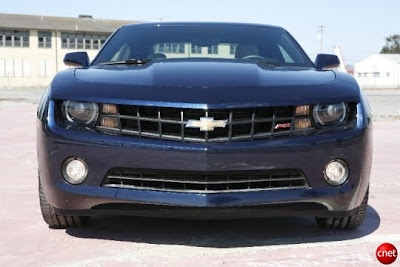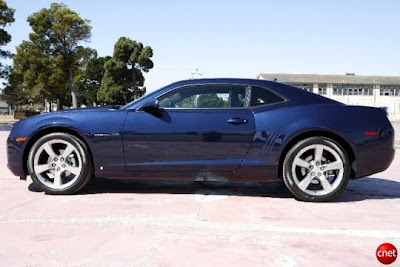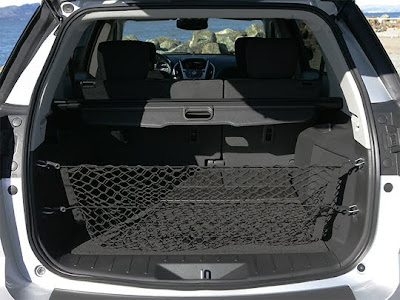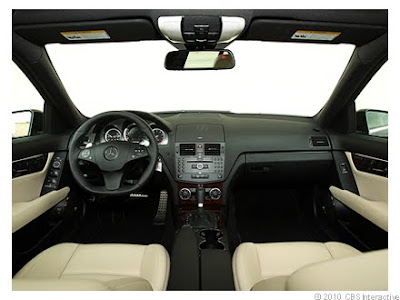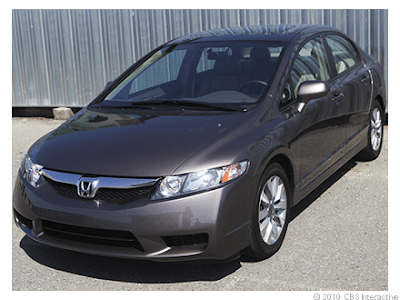The bad: Sync TDI is not a great substitute for an onboard navigation system. The transmission could not always keep up with driving situations.
The bottom line: A sporty-looking car, the 2011 Ford Fiesta's small size makes it good for urban areas, and it boasts excellent compatibility with personal electronics.
Review:
 |  | 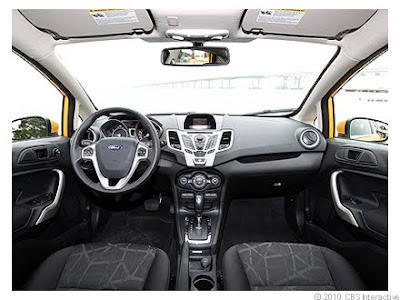 |
The conventional wisdom used to be that Ford should sell its European models in the U.S. The 2011 Ford Fiesta, designed in Europe, puts that notion to the test. Besides a couple of power train issues, the Fiesta proves that conventional wisdom still has worth.
The Fiesta is a new entrant in the burgeoning small-car class, competing with the likes of the Honda Fit, Toyota Yaris, Kia Forte, and the upcoming Chevy Cruze. Car companies don't make the margins on small cars that they made on SUVs, but current and predicted future market demands suggest small will be big.
We were initially disappointed to get the sedan version of the Fiesta, as the hatchback is quite a good-looking car. But the sedan grew on us quickly, especially when compared with the run of boring cars on the roads these days. The Fiesta comes on strong with ridged headlight casings providing contour to the front fenders and angular chrome inserts bookending the lower fascia.

Strong contour lines mark the sides of the Fiesta.
Onboard music, offboard nav
As the Fiesta is a Ford, we knew it would come with Sync, letting us connect MP3 players and Bluetooth cell phones, with voice command for dialing contacts and requesting specific music. This system worked every bit as well in the Fiesta as it had in previous Ford models we've tested, recognizing even fairly obscure and complex new artist names.
But Sync has plenty of competition now, as just about every new car with a Bluetooth phone system offers dial by name through the voice command system. Likewise, some cars are starting to offer voice command over connected MP3 players.

The Sync voice command button is mounted on the turn signal stalk rather than on the steering wheel.
Ford justifies not offering onboard navigation because of TDI, but we prefer an onboard system because Sync TDI only works when you have a cell phone connection. Navigation can be crucial in areas where you can't reach anyone on the phone.

Sync can read incoming text messages out loud on some phones.
With its six speakers, the audio system looked pretty average, and we didn't expect much. But we were in for a surprise, as the system played music in excellent detail. It managed to bring out instruments and layers in songs that would be buried by lesser systems. From that perspective, we liked the listening experience quite a bit, but the 80-watt amp and lack of a subwoofer means the bass is a shadow of what it could be.
Visceral driving
The quality from this audio system proved a boon during the long miles we covered in the Fiesta. With an EPA fuel economy rating of 30 mpg city and 40 mpg highway, it could theoretically run a long time on its 12-gallon tank. However, in our driving we only turned in an average of 29.2 mpg. Although mileage climbed steadily on the freeway, stop-and-go traffic in the dense urban jungle took its toll.
We were also a little enthusiastic with the gas pedal when traffic lights turned green, behavior we blame on the car. The Fiesta uses a very unique power train among small cars: a dual-clutch automated manual transmission mated to a 1.6-liter four-cylinder engine.

Ford's small engine uses variable valve timing to enhance efficiency.
The feel of this power train is very different from other cars, especially in this small-car segment. The rough chatter from the engine and the hard feel of the gear shifts might be a little much for people who aspire to Lexus levels of luxury, but we liked the visceral sensation we got from this car. That raw engine feel encouraged us to make frequent fast starts, hence our less-than-EPA fuel economy.
As a city car, the Fiesta proved very competent, its suspension well-tuned to handle the typical potholes and bumps of urban pavement. Responsive steering allowed quick maneuvers, such as diving into traffic gaps, and the Fiesta's small size made for easy parking. But as the hatchback version is more than a foot shorter than the sedan, it would be an even better city choice, opening up more parking possibilities.

Although it's a dual-clutch transmission, there is no manual shift mode.
At high speeds on the freeway, the Fiesta tooled along quite comfortably, although it was afflicted with a little more road noise than we would have liked. The suspension reacted well to the speed, contributing to a nice ride, and the soft seats suggested we could spend days driving this car across country and not be left too worse for wear. The only drawback was that, at speeds around 70 or 80 mph, the tachometer ran close to 3,000rpm, the transmission's sixth gear not providing the headroom to let the engine run slower.We put this car through its paces on some twisty mountain roads, as well. The vaunted European-style handling made itself known with a wheel that felt connected to the road, its crucial feedback giving us a sense of grip in the turns. The suspension kept the car stable as we slewed around the corners, but the tiny engine doesn't allow for much extra power to pull the car through.Although it lacks a manual shift option, the transmission does have a low range and an engine braking mode. The low range is the more aggressive of the two, forcing the engine to run around 4,000rpm, getting close to peak horsepower. The braking mode, activated by a button on the side of the shifter, gave a little extra power without making the engine howl.In sum
With its kicky design, the 2011 Ford Fiesta stands out from the run of boring small cars on the road, something not easy to do when faced with the restrictions of a sedan body style. And the interior reflects the energy of the exterior design. Ford was willing to take a bold chance with the Fiesta. The cabin tech interface is also very usable, so we give it points for that, as well.
Ford touts the twin-valve timing on the engine, but this performance technology is mostly new to Ford. We do like this engine, but it isn't the most advanced on the market. The dual-clutch transmission boosts the overall tech of the power train, although it did not always work perfectly. The electric power steering is another point in the Fiesta's favor, especially as Ford tuned it well.
Surprisingly for a Ford, the cabin tech does not stand out as much as other features of the car. We loved the audio system and, as usual, Sync's ability to connect with cell phones and MP3 players. But that is about the extent of it, and other automakers are catching up. Although having access to offboard services with TDI can be convenient, it is restricted to areas with cell phone service.
Spec box
| Model | 2011 Ford Fiesta |
| Trim | SEL Sedan |
| Power train | 1.6-liter four-cylinder engine, six-speed dual-clutch transmission |
| EPA fuel economy | 30 mpg city/40 mpg highway |
| Observed fuel economy | 29.2 mpg |
| Navigation | Offboard with Sync TDI |
| Bluetooth phone support | Standard |
| Disc player | MP3-compatible single-CD player |
| MP3 player support | iPod, Zune, many others |
| Other digital audio | USB drive, Bluetooth streaming, auxiliary input, satellite radio |
| Audio system | 80-watt six-speaker system |
| Driver aids | None |
| Base price | $17,390 |
| Price as tested | $19,875 |
